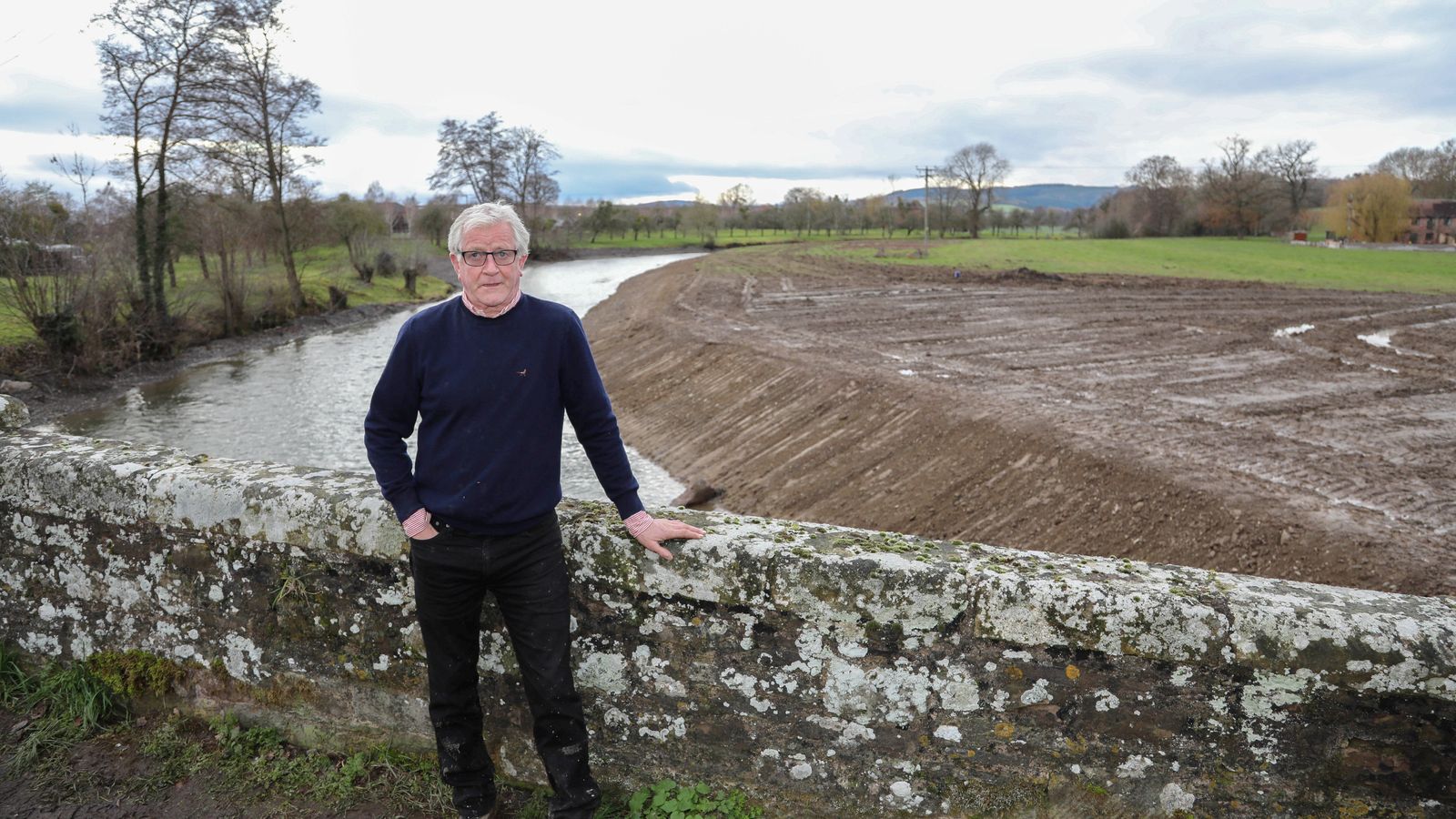
A farmer who used diggers and bulldozers to illegally rip out trees along a riverbank has been jailed for 12 months.
John Price, 68, dredged a section of the River Lugg in Kingsland, Herefordshire, and stripped the bank of trees and bushes.
Natural England and the Environment Agency said it was the worst riverside destruction they had seen and could take several decades to be fully restored.
Both organisations launched legal action against Price last year following a joint investigation which found the works in 2020 and 2021, that went ahead without being given consent, were in breach of several regulations.
Price, of Day House Farm, Kingsland, claimed the works were to help prevent flooding to local properties.
However, Martin Quine, an Environment Agency manager for Herefordshire, said his actions did not have any flood prevention benefit.
Herefordshire Wildlife Trust sounded the alarm about the works in December 2020.
Price was charged with a number of offences including failing to stop agricultural pollution from entering the river and removing trees and vegetation from the banks, reprofiling river banks, and carrying out work without consents in November 2020 and December 2021.
He pleaded guilty to the charges and was sentenced at Kidderminster Magistrates’ Court on Thursday – the first prosecution under farming rules for water which were introduced to boost good practice and to reduce and prevent water pollution.
He was also ordered to pay prosecution costs of £600,000 and disqualified from being a director of a limited company for three years.
An order under the Wildlife and Countryside Act 1981 was also imposed on Price requiring him to carry out restoration works on the 1.5km stretch of the protected river he had destroyed.
Habitats of otters, kingfishers, trout and salmon were among those destroyed.
Mr Quine said afterwards: “The destruction of river banks is not appropriate flood management. It is important that the judge recognised that the works significantly weakened flood prevention measures rather than improved them.
“We urge landowners never to take extreme measure such as this and instead to always work closely with the Environment Agency around river management to agree the best solutions for both landowners and the environment.”
Read more UK news:
Killer could have prison sentence increased
ChatGPT will make marking coursework ‘impossible’
Police ‘extremely worried’ about missing father and daughter
The River Lugg is a designated Site of Special Scientific Interest (SSSI) which means any works require a permit from the Environment Agency, and must be done in such a way that protects the area and does not cause any impact on flooding.
Emma Johnson, area manager for Natural England said: “The destruction of this section of the River Lugg was devastating for the abundance and range of species which thrived in this river. The River Lugg is one of the most iconic rivers in the UK and to see this wanton destruction take place was devastating.
“This is why we have used our powers as regulators to see that justice was done and to act as a stark warning to others that we will take the strongest action against those who do not respect the laws that protect the environment and wildlife we all cherish.”
Jamie Audsley, chief executive of Herefordshire Wildlife Trust, said the sentencing reflects the seriousness of the damage caused by Price.
“We were shocked to discover a bulldozer was used to undertake work in the river, disturbing gravels, reprofiling a bank and removing vegetation – the episode caused immense harm to this special and much-loved river. The riverbed and its plants such as water crowfoot are home to crayfish, otters and salmon, lampreys and dragonflies,” he said.
“Whilst it will take a long time to recover, we hope that this stretch of river can once again become a thriving natural habitat for wildlife. We’re all looking forward to seeing it restored to its natural beauty.”













